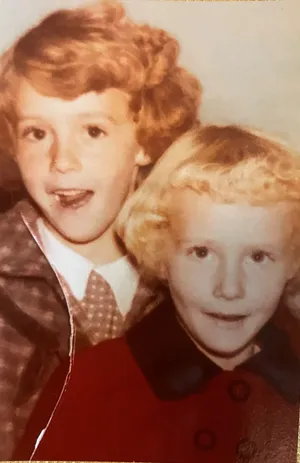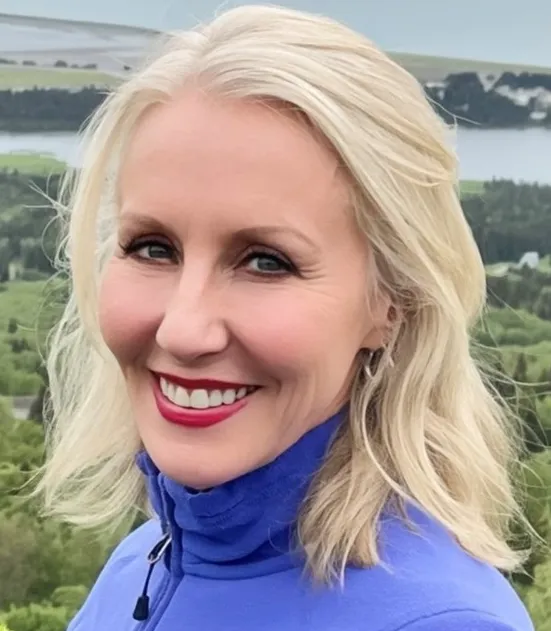Oppenheimer's nuclear fallout: How his atomic legacy destroyed my world
Leading up to the the very first atomic explosion in Los Alamos, New Mexico, Manhattan Project scientists took bets on the possibility that the detonation might ignite the atmosphere and destroy the planet.
While they determined that the risk was minimal, they pressed the button nevertheless and 78 years later, my family, friends and likely hundreds of thousands or more across this country are still living with the devastating consequences.
J. Robert Oppenheimer’s Trinity test sent a cloud of fallout over communities downwind of Los Alamos and into 46 states, according to a new study, catapulting the world into the nuclear age.
"Oppenheimer" director Christopher Nolan says fans have left theaters “devastated” by the movie's depiction of the test. I can only imagine their horror if they learned what came next: Trinity was only the first of hundreds of nukes detonated on American soil, and it wasn’t until 1992 that the United States exploded the last.
We, the hidden casualties of the Cold War, have been fighting for recognition and just compensation for years. We finally have a glimmer of hope.
How nuclear bomb tests affected my family
Driven in part by Nolan’s "Oppenheimer" and the cries of affected communities nationwide, the Senate recently passed an amendment to expand compensation for victims of radiation exposure from the production and testing of nuclear weapons. It’s well past time that we are recognized as the true legacy of Oppenheimer’s bomb.
During the Cold War, the United States detonated 928 nuclear bombs in the Nevada desert, many of which were more powerful than those that decimated Hiroshima and Nagasaki.
The nuclear threat is real:Our nuclear weapons are much more powerful than Oppenheimer's atomic bomb
Of these, 100 were detonated above ground. A Navy meteorologist warned that the prevailing winds would blow eastward, carrying a “certain amount” of radioactivity, but expediency and convenience won the day.
The wind indeed carried fallout across the country, colliding with rain and snow and falling to the land below. There, it threaded its way into the food chain and, ultimately, our bodies. The Atomic Energy Commission's decision to ignore, and then cover up, the danger has left a trail of suffering and death that continues to this day.
As a child in Salt Lake City, my thyroid absorbed this radiation. Years later, I was diagnosed with thyroid cancer and suffered other health complications that left me unable to have children. For others, the poison went into the teeth, bones, liver, lungs, pancreas, breasts, soft tissue and reproductive organs. The damage caused can take decades to manifest as life-threatening illnesses.

My older sister and I counted 54 people in our childhood neighborhood who developed cancer, tumors, leukemia and autoimmune disorders. My 10-year-old classmate died of a brain tumor in 1964. A few weeks later, her 4-year-old brother died of testicular cancer.
My sister died in 2001 after a nine-year battle with an autoimmune disease. And now another sister is fighting a rare stomach cancer.
We are all downwinders. Nuclear fallout ravaged New Mexico – but we're all still living with it.
I have buried and mourned the dead and comforted and advocated for the living, worrying with each ache, pain and lump that I am getting sick again.
And the damage continues. Cancers return, new cancers develop, other health complications arise. And, even more troubling, the DNA damage could affect future generations.
A Princeton study recently released mapped how fallout from atmospheric testing in New Mexico and Nevada spread across the country. It’s at once shocking and unsurprising, confirming the experience of so many who have suffered the consequences.
We will forever be living with the fallout of nuclear weapons. Essentially, we are all downwinders.
Beware nuclear-armed Russia:Putin won't wipe out Prigozhin's Wagner Group. He needs mercenaries to fight Russia's wars.
Tragically, the U.S. government has yet to do right by those whose lives and health were sacrificed to national security. The Radiation Exposure Compensation Act (RECA) – passed in 1990 as “compassionate payment” to a very narrow group of those affected in some counties of Utah, Nevada and Arizona – was always flawed. For decades, downwinders have fought to expand eligibility to include those most heavily impacted in seven Western states and Guam, as well as additional categories of uranium miners.
The Senate’s passage of a last-minute expansion amendment through the National Defense Authorization Act is vital progress. Now, the defense bill must be conferenced by the House. If the measure doesn’t move forward, RECA will expire next June, cutting off lifesaving compensation for thousands. Time is running out, and more of us die every day.

At the end of “Oppenheimer,” the scientist revisits with Albert Einstein the concern about the bomb’s potential to destroy the world and solemnly laments, “I believe we did."
Oppenheimer was right – my world and those of my friends and neighbors, and people across the country, have been destroyed by the bomb. Expanding the Radiation Exposure Compensation Act can’t bring my loved ones back to life, but it would provide the recognition, support and justice that the survivors in our community desperately deserve.
Mary Dickson is an award-winning writer, downwinder and thyroid cancer survivor who is an internationally recognized advocate for survivors of nuclear weapons testing in the United States. She has written and spoken widely about the human toll of nuclear weapons testing at conferences, symposia and forums in America, Japan and elsewhere.
Disclaimer: The copyright of this article belongs to the original author. Reposting this article is solely for the purpose of information dissemination and does not constitute any investment advice. If there is any infringement, please contact us immediately. We will make corrections or deletions as necessary. Thank you.







